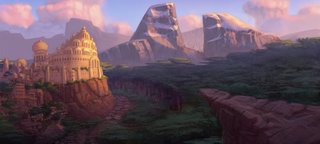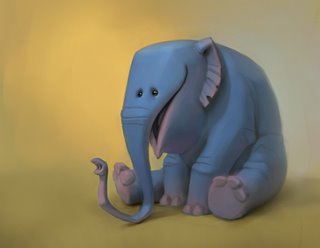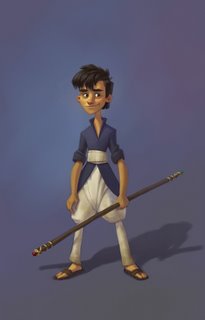Now that I've finished the character design class for the second time, I have a few thoughts I'd like to vent.
The first time I took the class a couple of years ago was the first time I'd ever heard about the concept of "appeal" in character design. I knew that some drawings were appealing to me, and that others were not, but I was sort of surprised when a drawing that I liked a lot was heavily criticized for lack of "appeal." But I think as the semester wore on, I started to see beyond the quality of the drawing itself, and in time I started to be able to perceive when a character had something special that made the design itself appealing. The way Ryan Woodward explained it left me with the impression that appeal is an almost magical quality designers strive for and almost have to just "feel out" in a design. I was frustrated because I didn't have a clue how to infuse my designs with this appeal, even though I recognized that they were lacking in it.
Since then I've done a lot of concept art at work, and I've studied a ton about what other designers are doing and why. I've especially learned a lot from the artists at Disney as we've tried to duplicate the styles they've developed for the movies. The
head concept guy here at work has been helpful as well. And finally after taking the class a second time I think I'm starting to get a handle on this "magical" quality called appeal. So here's my three basic conclusions about appeal. Feel free to argue in the comments if you have a disagreement or correction for my theory:
Let me suggest first of all that appeal isn't magical or mystical. It's pretty straightforward, actually. The three ideas that influence appeal are: Effective use of design principles, creativity, and attention to audience and purpose.
Using design principles to increase the appeal in your design is one of the most surefire ways to add appeal. Honestly, I've seen artists take the most generic character idea and turn it into something appealing by playing with the shapes, the proportions, the colors, the lines, the textures, etc. I can post an example of this later. It's a simple solution, but sometimes the most effective one. I'll add one thing to this list that isn't really a design principle but I think it fits under this same idea: personality. It's another one of those easy fixes for adding appeal to a character design---often just giving a character a facial expression or a pose that gives them life or some kind of attitude will do a lot.
Creativity is another thing to add appeal, although this is the tough one that's maybe a little more like magic. But it's helpful if you can make your character different than other characters that people have seen. Some people go way overboard with this---making their character TOO different---and I think it's important to keep designs at least somewhat in the realm of familiarity. But unless you're specifically trying to duplicate something that has been done before (like for the sake of parody), try to be creative and your character will be more appealing.
Finally, I think understanding your audience and purpose is the number one struggle in making your character appealing. Ryan was always critiquing based on whether our designs appealed to him, which is fine, but he never said anything about other audiences and I think a professional character designer needs to think about that. What's the demographic of the intended audience? What kinds of design attributes appeal to an 11-year-old girl? When you start to think about these things, suddenly it gives a context for the principles you need to focus on when designing.
For example, teenage and young adult males tend to find detail/texture and a sort of heightened realism appealing. That's the only reason why
Rob Liefeld was ever able to sell comics. On the other hand, very young children are attracted to simple shapes and bold colors---hence the development of the "Cartoon Network" style of art. I don't think there's a simple set of rules and associations we could list out for which groups of people like what, and I wouldn't be surprised if a lot of those factors are socially or environmentally influenced and change with time. In fact, I think we've seen examples of new art styles that take hold of a segment of the populous for a short period of time, but then fade away. So there's no reason why you have to draw everything like Cartoon Network to appeal to kids. But if you want to make something that kids will like, it will help to pay attention to the design ideas that make what kids like so appealing to them.
I think the other thing that ties into audience is purpose. Why are you designing the character? What role are they supposed to play and how should they play to audiences? How will the art style affect the apparent purpose of the characters or the project? Basically, ask yourself which design principles you will focus on in order to reach that audience and fulfill the purpose that the designs are meant to fill. And I strongly suspect that any design that is creative, fulfills its purpose, and uses all the design principles appropriately, will be appealing to its intended audience. And who knows, maybe if you've got that extra touch of magic, you can do just the right things to make that design appealing to everybody else as well.
Well, I'm glad to have gotten that off my chest. I'm sure there's more to it that I've missed though, so I'm open to any other ideas on the subject. Thanks for listening.




























